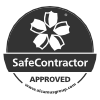Legionella is a bacterial disease that causes severe pneumonia, especially in the elderly. Any building that regularly has visitors is at risk of hosting Legionella, and builders and contractors are responsible for maintaining this bacteria within acceptable limits. How do you know what your control standards are? The British Standards Institute has released an updated version of the standard it originally drew up in 1992: BS7592:2008; BS7592:2022
Let’s take a look at the some of the key updates to this standard surrounding sampling for the presence of legionella bacteria.
This article is part of the Water Hygiene Newsletter.

BS7592:2022: Clear Rationale for Sampling
Firstly, the BS7592:2022 states that a ‘clear rationale should be provided for any sampling’ (page III), whether routine or incident-based. This aims to eliminate either sampling for the wrong reason, or sampling without reason.
Where sampling is deemed necessary, usually as a result of a control scheme failure or presence of susceptible persons then ‘the WSG (Water Safety Group) or RP (Responsible Person) should agree the sampling plan’ (clause 4.6) prior to any samples being taken. This commits the RP to prescribe locations for sampling, avoiding the chance of ‘random samples’ being requested or recommended. This also makes it clear what the organisation doing the sampling will be measured against when reviewing results.
BS7592:2022: The Best Sampling Locations
When selecting which outlets should be included on a WSP (Water Sampling Plan) sampling locations should be selected based on ‘locations considered most likely to contain the highest numbers of Legionellae or which pose the greatest risk from exposure’ (clause 5.4). The latter being particularly significant in a healthcare environment.
Reasons for Routine Sampling
Where routine sampling is required it should only be included on a WSP ‘as identified by a Legionella Risk Assessment taking account of, but not limited to:
- The presence of highly susceptible people; and
- Ongoing verification of a recommended scheme of control where the potential for Legionella growth is identified’ (clause 4.3.1).

Methods for Routine Sampling
The samples taken for ‘routine monitoring purposes’ which form part of a WSP should be ‘pre’ flush samples and should be ‘taken from unmixed outlets’ (clause7.4.1). Non-Sentinel outlets are also to be sampled on a ‘rotational basis’ (clause7.8.1) to ensure a complete picture of the potential Legionella colonisation is obtained.
Where ‘post’ flush samples are taken ‘the condition of the outlet should be recorded and, where the condition could affect sample outcome, brought to the attention of the Responsible Person (RP)’ (clause7.4.3). Also, as outlet sterilization is a key part of the methodology in taking a ‘post’ flush sample ‘the outlet and surroundings should be rinsed with clear water to avoid damage to the outlet and surrounding surfaces’ once the sampling has been completed (clause7.4.3). Additional samples of both ‘pre’ and ‘post’ flush should be obtained ‘from outlets of particular concern as indicated by a risk assessment or by temperature monitoring’ (clause 7.8.1).
Cold Water Storage Tanks
In similar vein to the preceding point there has also been a change in the recommendations for where sampling of CWSTs/cisterns have been identified, whereas previous guidance stated that ‘dip’ sampling was an effective method of identifying the colonisation potential of a cistern the standard now states ‘potable water cisterns should not be opened for sampling as this can introduce contamination, especially when removing the lid. Instead, the sample should be taken from either a dedicated sample valve or the nearest outlet to the cistern’ (clause 7.3.1).








